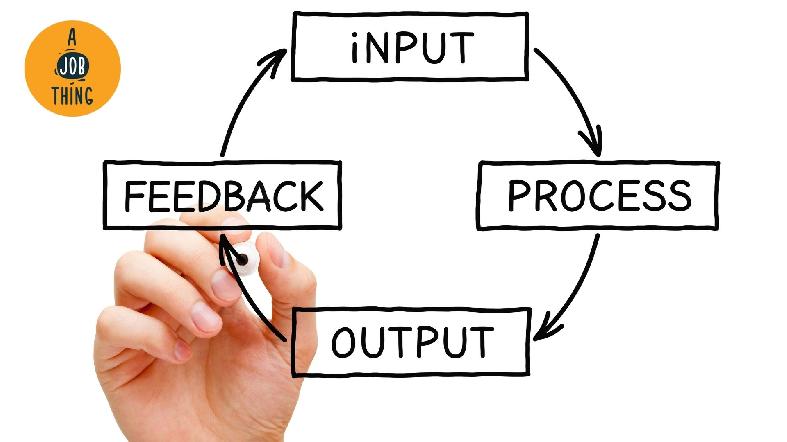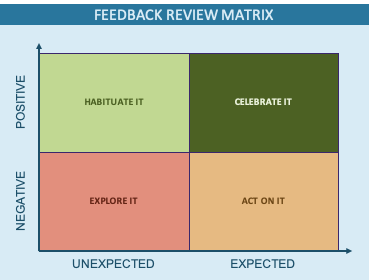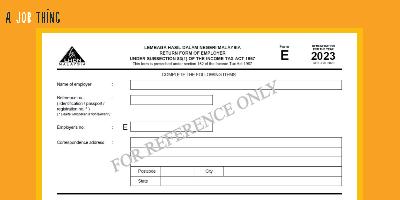
Improve Yourself Using The Feedback Review Matrix
Create Job Description Using AI
Write appealing job descriptions for any job opening to attract the most qualifield and suitable candidates. FOR FREE.
try now
Receiving feedback is only one part of the challenge we face in our self-development. Once we have received feedback, we need to review it, understand it and think about acting on it. The feedback review matrix is the best tool to analyse our feedback process.
The tool is simply a 2×2 matrix with the positivity of feedback on the vertical axis and expectancy of feedback on the horizontal axis. Placing the range of feedback received into this matrix makes it easier to spot outliers and recognise blind-spots. It’s also simpler to choose key points to focus on and design an action plan based on the feedback.
-
When feedback is positive and expected, we should celebrate it.
-
When it’s negative and expected, we should act on it.
-
When it’s positive and unexpected, we should habituate it.
-
If it’s negative and unexpected, we explore it before doing anything else with it.
Using the Feedback Review Matrix
It's easy to use this model. All you need to do is get the feedback points you’ve received and place them into the matrix. If you’ve received many feedback comments, it is probably worth grouping thematically before placing them on the matrix.
You can also use the matrix for feedback you’ve received as an individual, or as a team. Likewise, if you are a line manager, you can use this matrix as a means to analyse the feedback you’ve received concerning your team members before having a meeting with them. Doing this will help you prioritise and understand key information to deliver.
The act of reviewing and placing your feedback into the right containers is helpful. Once you’ve understood, grouped and placed the feedback you’re analyzing into the model, you will need to act appropriately for each group of feedback.

Source: World of Work
Positive and expected feedback:
Celebrate it – Celebrate the things that you know your team do well and ensure that your team members keep doing them.
Negative and expected feedback:
Change it – Design an action plan, set objectives and request frequent feedback to help your team member change these behaviours.
Positive and unexpected feedback:
Habituate it – Validate this feedback to make sure it’s not just a one-off comment from a single individual. If the feedback is valid, set goals and get feedback to help your team member turn these behaviours into habits and routines. Your team member may have a new skill for their future career.
Negative and unexpected feedback:
Explore it – After validating this feedback, explore it in detail to understand it further.
- Does the team member have a blind-spot?
- What do other team members think?
- What is the impact?
After finding out these answers, the team member should act accordingly to either change themselves so that this doesn’t happen any more or change their career, so they don’t face this problem any more.
Receiving feedback well can be tricky, and that feedback can feel like a social threat. Receiving feedback can be triggering to your team members. Therefore it's better to learn to receive feedback before giving feedback.
Source: World of Work
What is AJobThing? Click to find out more about us!
Articles you might be interested in
HR Guide: Procedure and Templates for Leave Administration
What is Emergency Leave and How Does it Work in Malaysia?
Which Employees are Covered under the Employment Act?





